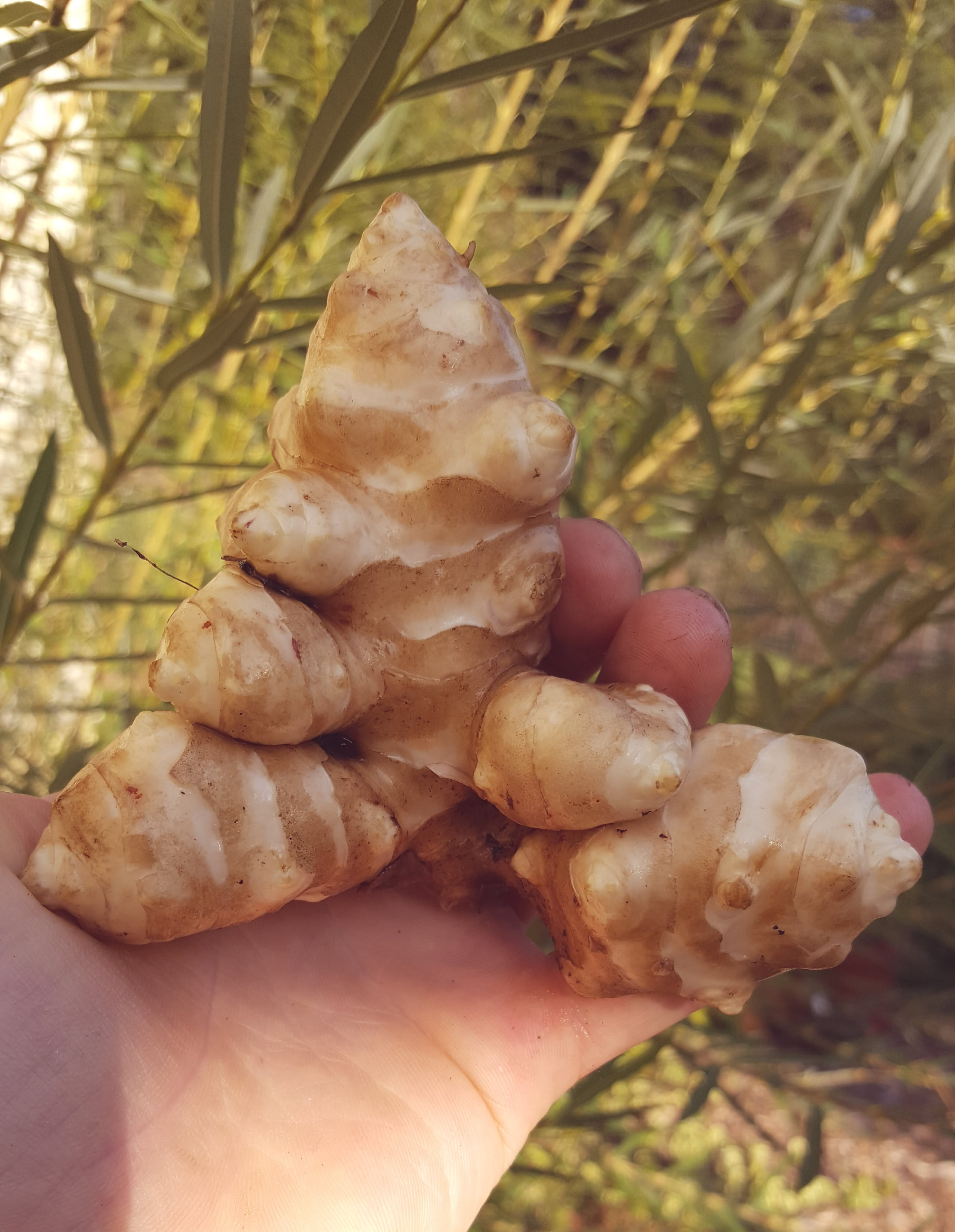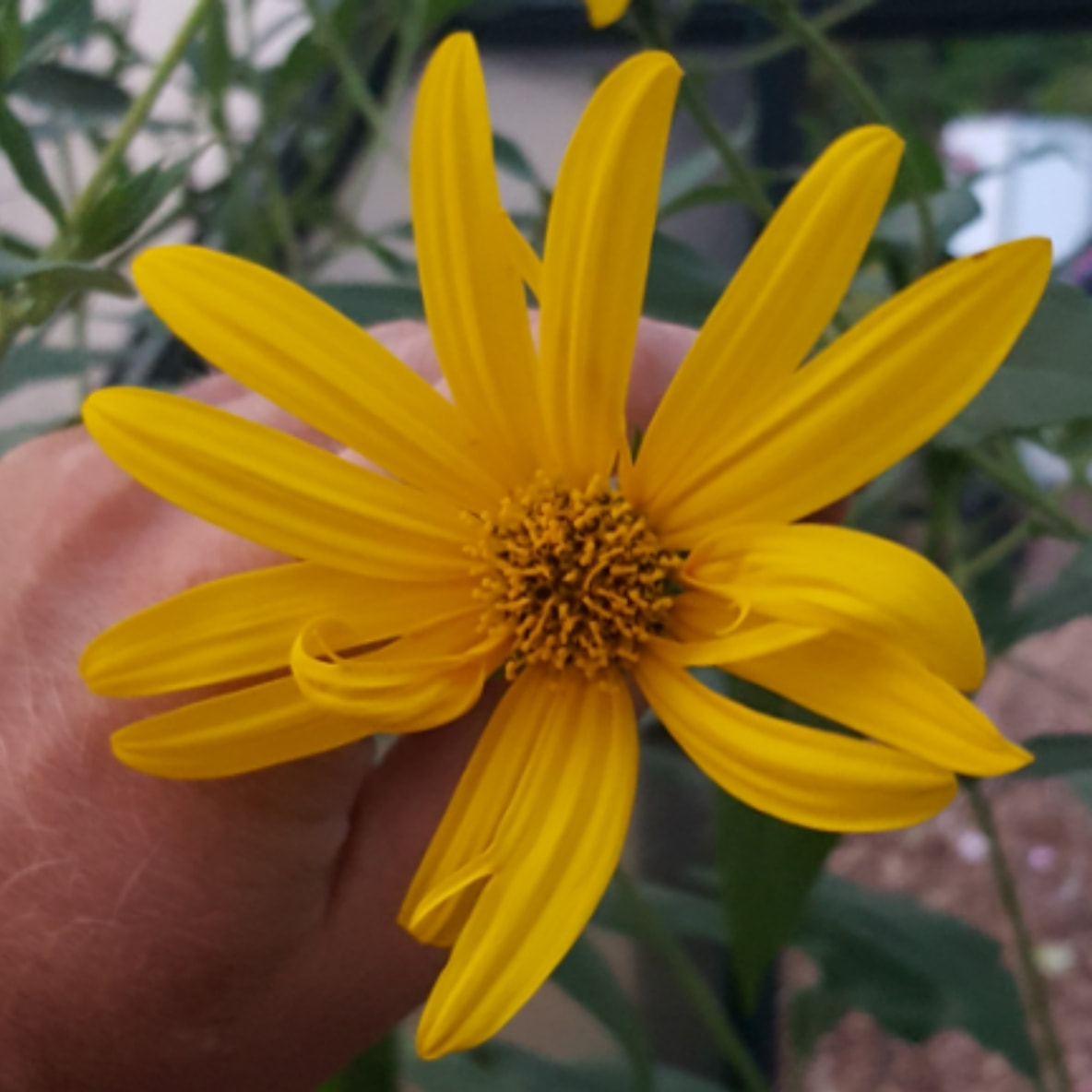Growing Sunchokes - That's the easy part...
Now, how to eat them!

Many people find domestic selections of sunchokes to be fairly palatable (unless of course they grow a less tasty cultivar with a wild piney flavor). The real challenge is figuring out how to eat them without turning one's guts into a gas factory.
Wait! Don't go anywhere just yet. Keep reading.
Eating sunchokes:
There are three primary ways to enjoy sunchokes with endless variations in each category.
1. Raw - sunchokes make a tasty snack in the raw form. However, it's important to limit raw intake at any given time because their primary stored carbohydrate is in the form of "inulin". Inulin is very good for your gut flora as it is considered to be a pre-biotic meaning it feeds and stimulates your gut flora in a positive way. The risk is that if you feed your gut flora too much too quickly they can get so excited that they start producing excessive amounts of gas as a byproduct of their inulin consumption. If you aren't careful you could get painfully and embarrassingly gassy, but in moderation (or if acclimated to it via regular consumption) you can enjoy sunchokes as a tasty raw snack.
2. Fermented - A great way to enjoy and preserve a harvest of sunchokes is to ferment them in a brine like pickles. This natural fermentation process produces a tangy result and much of the pre-biotic inulin is consumed during fermentation meaning you can munch on your sunchoke pickles without risk of overdoing it and getting gassy. Just make sure you remember to add a good tannin source to your brine (just as you would for cucumber based pickles) or else they will get mushy instead of remaining crisp.
3. Cooked - While the raw and fermented options are great if you don't need to count on sunchokes as a calorie crop staple, you should consider unlocking the caloric potential of this veggie to help turn this easy to grow crop into a good way to actually help meet your daily caloric needs. While lots of sources on the internet indicate that you can convert the inulin in sunchokes to more digestible carbohydrates through very long slow cooking, I find that the results are a bit mushy and not of the best flavor. Instead, harnessing the power of science we now know that cooking inulin rich vegetables like sunchokes with an acid like lemon juice produces a chemical reaction in which the inulin is broken down to release digestible fructose which has a greater ability to contribute to your caloric needs.
Lemon juice is usually around a pH of 2 which is more acidic than actually required for this process (though if you want a very lemony result you CAN use straight lemon juice). Very good conversion results can be had when heating inulin with a liquid at a pH of 3 (which is 10 times less acid than pH 2). If you are using neutral pH 7 water to dilute your lemon juice you can achieve an approximate pH of 3 by mixing 9 parts water with 1 part lemon juice. You should then heat at boiling temps for at least 20 minutes or simmering temp for closer to an hour. This will give you a very high conversion rate. Please note that there are other variables to consider such as size of the sunchoke pieces affecting total surface area for contact with acid as well as total ratio of acid liquid to solid vegetable matter. Don't stress the details though. Just use this info as a springboard to get started and make adjustments along the way in response to your results. After all, it's okay to have a little unconverted inulin leftover to work as a prebiotic in your gut!
If you think you would like to try growing sunchokes (or if you'd like to try growing additional varieties to what you already have), check out my favorite varieties; Helianthus tuberosus 'Nora' and H. tuberosus 'Supernova'. I prefer these two varieties because they both produce their tubers close to the main trunk of the plant making harvest easy (wild as well as many cultivated types produce their tubers on longer rhizomes to spread further through the soil). As a bonus, both of these cultivars flower earlier than average for a sunchoke which means you get to enjoy a bonus show of beautiful sunflowers in the fall!
Share on Facebook Share on Twitter

Comments
Post a Comment